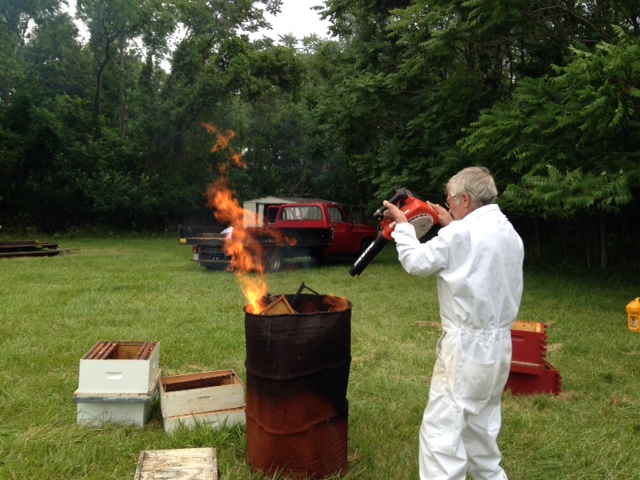
A Closer Look: Varroa Mite Reproduction
By Clarence Collison Reproducing Varroa females lay the first egg in the brood cell approximately 70 hours after host cell capping. The life cycle…
Read More
By Clarence Collison Reproducing Varroa females lay the first egg in the brood cell approximately 70 hours after host cell capping. The life cycle…
Read MoreAn inquiry into honey and pollen by Leah Latshaw “What is honey?” “Why is it different colors?” “How is the honey produced by a…
Read MoreBiology, mentors, veterans, bees and honey by Jack Blackford When stepping into the cavernous beekeeping workshop of Ed Forney you must be prepared for…
Read More
What robots can learn from honey bees by David Hargrove and Sheridan Tekosky Honey bees, usually thought of for their contribution to agriculture, are…
Read More
It’s important to know what blooms when and where by Denise Ellsworth Spring can be slow to arrive to Ohio. Here in the Buckeye…
Read More
CO2, UV light, temperature and humidity all affect nectar production and quality by Carmine DeStefano The practice and art of beekeeping is a tremendously…
Read MoreWE WORK TO PROTECT YOUR HONEY BEES A wrap-up of the past year. by Michele Colopy This past year has been busy for the…
Read MoreKeeping Bees In Vermont Without Treatments Of Any Kind by Ross Conrad A long, non-descript driveway off the main road in New Haven, Vermont…
Read MoreAll boxes are not created equal. Pick the one best for you. by Ross Conrad In the old days choosing a home for your…
Read More
by Jim Thompson Honey bees are amazing insects, but you already know that but I just wanted to reaffirm that information. The strongest geometric…
Read MoreScattered all through the body cavity of the honey bee but especially in the abdomen are irregular masses of a soft, usually white tissue…
Read More
Bees on FIRE!! American Foulbrood! The worst nightmare of a beekeeper to say the least. Recently I had the unfortunate opportunity to witness the…
Read More